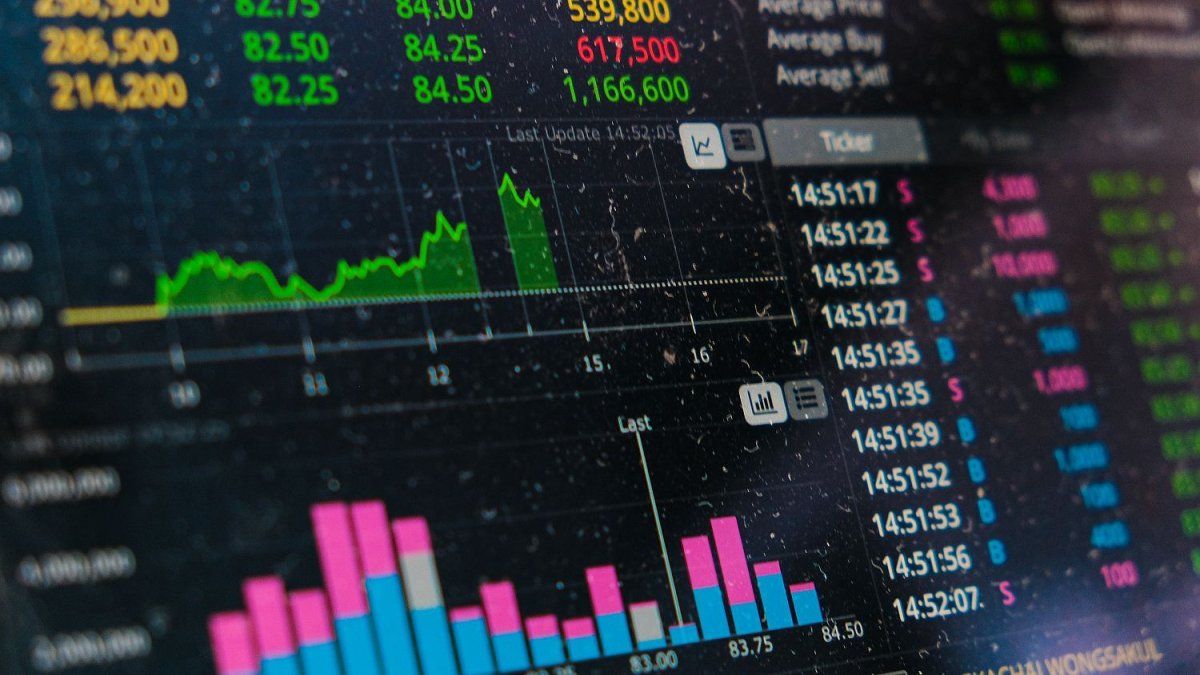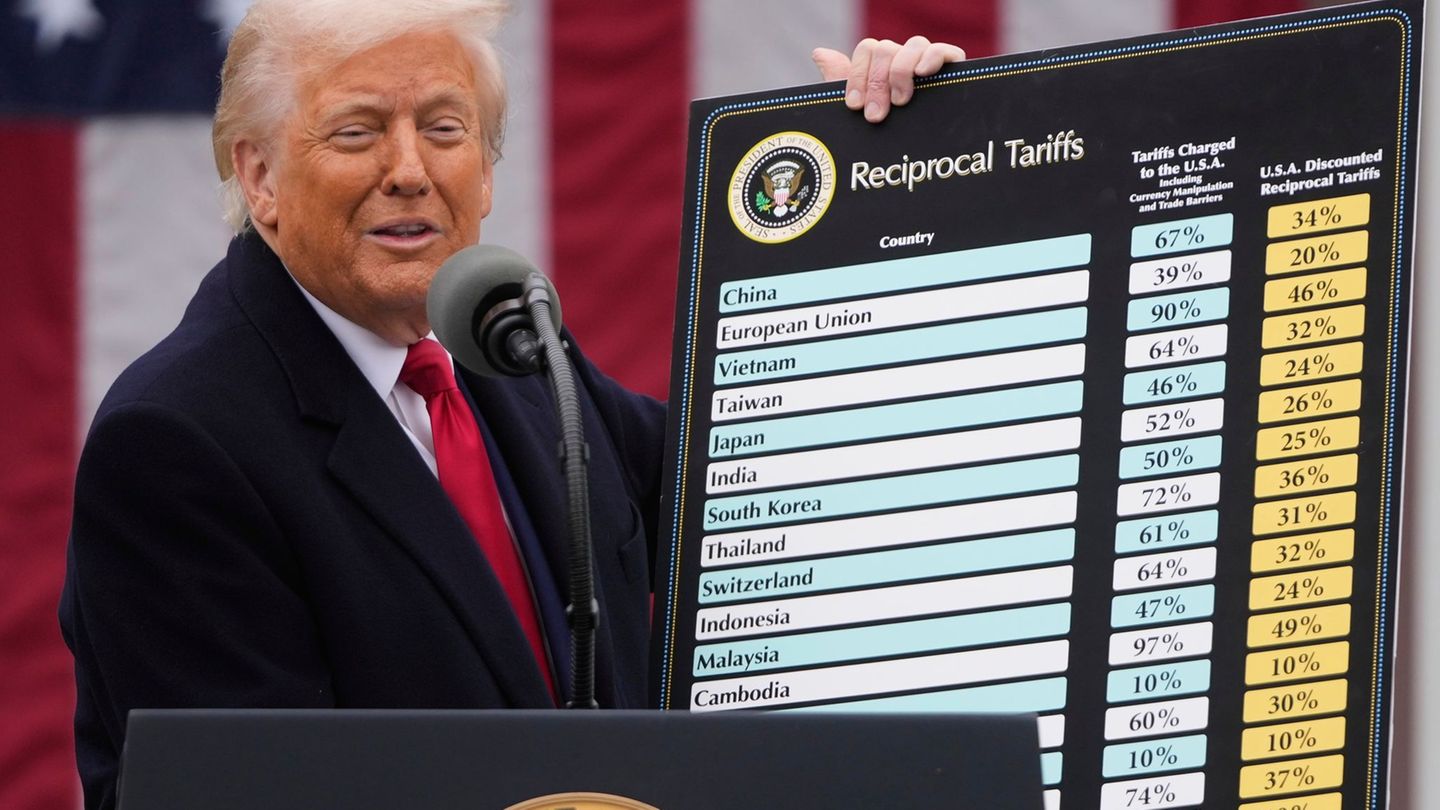Milei bets that money laundering help the economy with the arrival of some US$35 billion that could be invested in production, although on the political level, The government is going through a complex situation after a series of defeats in Congress, where he has a large minority.
He S&P Merval gains 2.2% to 1,773,413.630 unitsafter losing 1.1% in the previous session and accumulating an increase of more than 9% in the previous five trading sessions. The increases of Transener (+5.3%), Galicia Financial Group (+3.8%) and Irsa (+3.7%).
“Argentina’s Merval finds some resistance at historic highs, around 1,750,000 points, but still, The short and medium term upward trend is still maintained“said Alexander Londoño of ActivTrades.
For its part, with Wall Street down, the Argentine papers US-listed stocks rise up to 6.3% led by Irsafollowed by BBVA bank (+5.2%), and Galicia Financial Group (+4.8%).
The theory of black september
However, it is worth remembering that there are several theories that support the fact that September historically presents a negative pattern. One of them maintains that traders, upon returning to work after the summer holidays, rebalance their portfolios in September, increasing sales volume and putting pressure on stock prices.
Another theory suggests that bond issuance increases in September as the summer holidays come to an end; these bond sales attract money that would otherwise have supported stock prices.
Another explanation blames mutual funds, whose fiscal year typically ends on Oct. 31. According to this theory, funds close out losing positions in the last months of their fiscal year for tax reasons.
Bonds and country risk
In this context, the dollar bonds They operate with a majority of casualties led by the Global 2035 (-1.7%), followed by the Global 2041 (-1.2%), and Global 2038 (-1%). Thus, the country risk measured by JPMorgan rose for the second time in a row by 1.70% to 1,492 basis points.
“In terms of strategy, we find the option attractive. ‘Hard dollar’ debt with a medium-term view, “in a context where the Government manages to maintain the reform agenda, and advances in the normalization and deregulation of the economy,” he said. Capital Markets Argentina.
“As far as weights are concerned, a moment of uncertainty given the different scenarios “In order to get out of the ‘cepo’ (exchange controls), we consider the best alternative to be reducing the ‘duration’ until we have more details on the path to follow,” he added.
Wall Street: The impact on dollar-denominated bonds
Reducing country risk is crucial for the Government in its attempt to regain access to voluntary financing markets. However, this objective faces numerous challenges, including the variability in market mood, as evidenced in recent sessions and despite the fact that the Minister of Economy, Luis Caputodismissed the impact of the index.
This weak start to the month follows a volatile August, but with a positive close for the main stock market indices, which approached their highest historical levels. This increased turbulence has led investors to adopt a more conservative stance, affecting assets considered riskier. Argentine bonds have not been exempt from this trend, with risk increasing to 1,467 basis points.On Tuesday, bonds suffered widespread falls of between 2.5% and 3%.
The government’s economic team assures that there is no urgency to return to the markets, given that debt payments for next year would be covered. However, Caputo has not yet clearly explained how the maturities that exceed US$10 billion will be financed with private bondholders.
investments markets finances live stocks bonds
The government’s economic team says there is no urgency to return to the markets, given that debt payments for next year would be covered.
Depositphotos
Although prices have improved in recent weeks, Argentine debt continues to struggle to move away from the 1,500 basis point country risk zone. These levels complicate access to voluntary financing in international markets, which Argentina has not been part of since early 2018.
The government hopes that money laundering will increase the demand for dollar bonds, which are part of the investment options for those who regularize their situation. One of the bonds that has gained popularity recently is the series 3 of Bopreal, known as BPY26. Issued by the Central Bank for importers, this bond matures during Javier Milei’s presidency, which could provide greater certainty to investors regarding their payment.
On the other hand, exchange control continues to maintain a relatively high gap. The Government has intensified its efforts to avoid increases in financial dollars. In addition to the “dollar blend”, which allocates 20% of total exports to cash settlement, the Treasury has also sold part of the dollars acquired in recent months to absorb pesos. In the last two months, these specific sales would have totaled some US$700 million.
Source: Ambito




